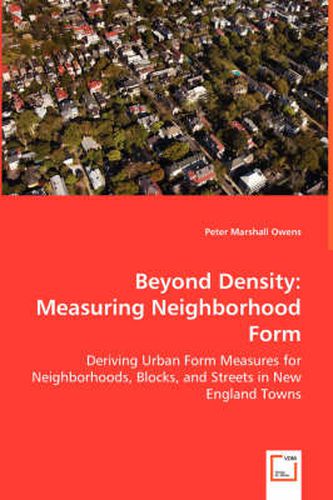Readings Newsletter
Become a Readings Member to make your shopping experience even easier.
Sign in or sign up for free!
You’re not far away from qualifying for FREE standard shipping within Australia
You’ve qualified for FREE standard shipping within Australia
The cart is loading…






This title is printed to order. This book may have been self-published. If so, we cannot guarantee the quality of the content. In the main most books will have gone through the editing process however some may not. We therefore suggest that you be aware of this before ordering this book. If in doubt check either the author or publisher’s details as we are unable to accept any returns unless they are faulty. Please contact us if you have any questions.
A new paradigm in ecological design calls for transforming out-moded development patterns into more sustainable communities supporting healthier, pedestrian-oriented lifestyles. Proponents of smart growth and new urbanism argue compact, mixed use, and walkable neighborhoods will reduce energy use, foster social interaction, and promote active living associated with lowered risks of heart disease and obesity. However, emerging research findings in this area have been limited by conventional built environment measures (i.e. density, land use mix) that fail to adequately describe key urban form differences as independent variables–especially at finer grained scales of urban design. This book describes the development of a more robust series of simple, replicable metrics to measure key landscape qualities. Using a set of twelve case studies from New England towns, successful measures are derived and tested at two scales: the broader neighborhood and the more detailed realm of street, block, and building. This work has broad application to academics and professionals in architecture, urban planning, public health, geography, transportation, energy, and sustainable development.
$9.00 standard shipping within Australia
FREE standard shipping within Australia for orders over $100.00
Express & International shipping calculated at checkout
This title is printed to order. This book may have been self-published. If so, we cannot guarantee the quality of the content. In the main most books will have gone through the editing process however some may not. We therefore suggest that you be aware of this before ordering this book. If in doubt check either the author or publisher’s details as we are unable to accept any returns unless they are faulty. Please contact us if you have any questions.
A new paradigm in ecological design calls for transforming out-moded development patterns into more sustainable communities supporting healthier, pedestrian-oriented lifestyles. Proponents of smart growth and new urbanism argue compact, mixed use, and walkable neighborhoods will reduce energy use, foster social interaction, and promote active living associated with lowered risks of heart disease and obesity. However, emerging research findings in this area have been limited by conventional built environment measures (i.e. density, land use mix) that fail to adequately describe key urban form differences as independent variables–especially at finer grained scales of urban design. This book describes the development of a more robust series of simple, replicable metrics to measure key landscape qualities. Using a set of twelve case studies from New England towns, successful measures are derived and tested at two scales: the broader neighborhood and the more detailed realm of street, block, and building. This work has broad application to academics and professionals in architecture, urban planning, public health, geography, transportation, energy, and sustainable development.